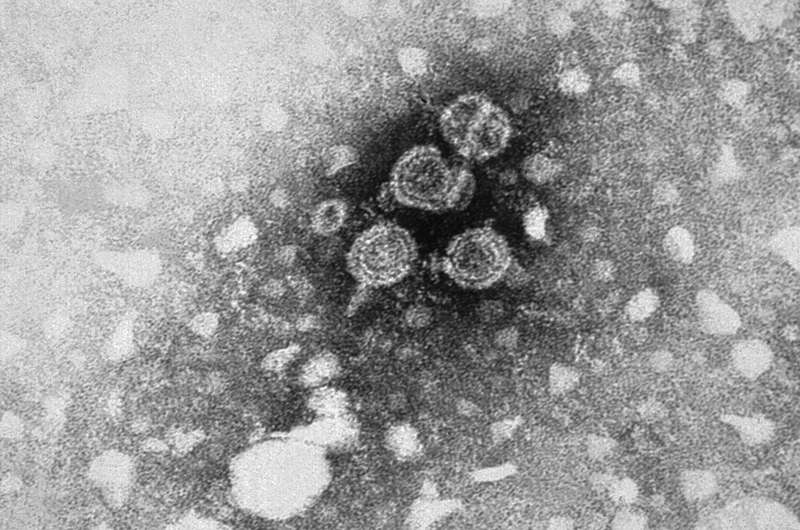A microscopic image of the Hepatitis B virus, taken by the Centers for Disease Control and Prevention
Today, World Hepatitis Day, marks the first time that the global health community has come together to officially begin moving towards the elimination of viral hepatitis by 2030.
It comes as the World Health Organization (WHO) publishes new data today from 28 countries, representing approximately 70% of the global hepatitis burden - which indicates that efforts to eliminate hepatitis are gaining momentum. The new data show that:
- More than 86% of countries reviewed have set national hepatitis elimination targets and more than 70% have begun to develop national hepatitis plans to enable access to effective prevention, diagnosis, treatment and care services.
- Nearly half of the countries surveyed are aiming for elimination through providing universal access to hepatitis treatment.
Despite these promising signs of progress towards elimination, viral hepatitis still kills 1.34 million people every year and the number of deaths have increased by 22% since 2000. The World Hepatitis Alliance is therefore calling upon Member States and countries to urgently speed-up response rates especially when it comes to numbers of people who can access testing and effective treatments for hepatitis B and C.
Raquel Peck, CEO of the World Hepatitis Alliance who has previously battled hepatitis C and is now cured said: "Elimination is no longer a dream. However, governments and policy makers must use this opportunity today on World Hepatitis Day to collaborate, identify and overcome the significant barriers that do still remain. For instance, dramatically increasing the number of people who can get tested for viral hepatitis and subsequently ensuring access to effective treatment is a huge priority in all regions of the world."
Earlier this year, the first-ever Global Hepatitis Report by the World Health Organization (WHO) was published and established a much needed set of baseline data measuring the progress made against the global targets of achieving the 2030 elimination goal.
With this baseline data now in place, World Hepatitis Day 2017 is an opportunity to call on greater multi-stakeholder collaboration within the global public health community and marks the much-needed start of the process towards eliminating hepatitis and making this a reality.
The WHO baseline data previously revealed that although some of the 2030 targets, such as childhood vaccination and injection safety are within reach, there is a crucial need for all stakeholders, including policy makers, medical professionals and civil society to step-up efforts and work together to address access to effective treatment, diagnoses and mother-to-child transmissions.
Peck said, "Only with united action can we achieve our goal of elimination. Elimination is, of course, not just a public health goal - it is an individual goal for millions of men, women and children across the world. Every single person could be affected by viral hepatitis and we all have a part to play to achieve elimination. Today we come together as one community to raise awareness of the disease and take what steps we can as individuals to beat viral hepatitis."
This year's World Hepatitis Day campaign, one of only four official health days recognised by WHO, asks people to 'Show Your Face' to bring a human face to the elimination goal by posting a 'selfie' on social media using #ShowYourFace along with a message of support to advance the movement towards elimination.
Peck added: "We're asking the public to show their face and take action this World Hepatitis Day in solidarity of the 325 million people living with viral hepatitis. Whether that's getting tested or posting a #ShowYourFace selfie, every action brings us closer to eliminating viral hepatitis."
Viral hepatitis remains a major public health challenge:
- Globally, viral hepatitis causes 1.34 million deaths (a number comparable to annual deaths caused by tuberculosis, HIV and malaria).
- 325 million people globally live with viral hepatitis (approximately 4.4% of the world's population).
- Only 9% of persons living with hepatitis B and 20% of persons living with hepatitis C have been tested and are aware of their status.
- Less than 1% of people living with hepatitis B or C access treatment. To get involved in this year's campaign, visit: http://www.worldhepatitisday.org/showyourface.
Provided by World Hepatitis Alliance























